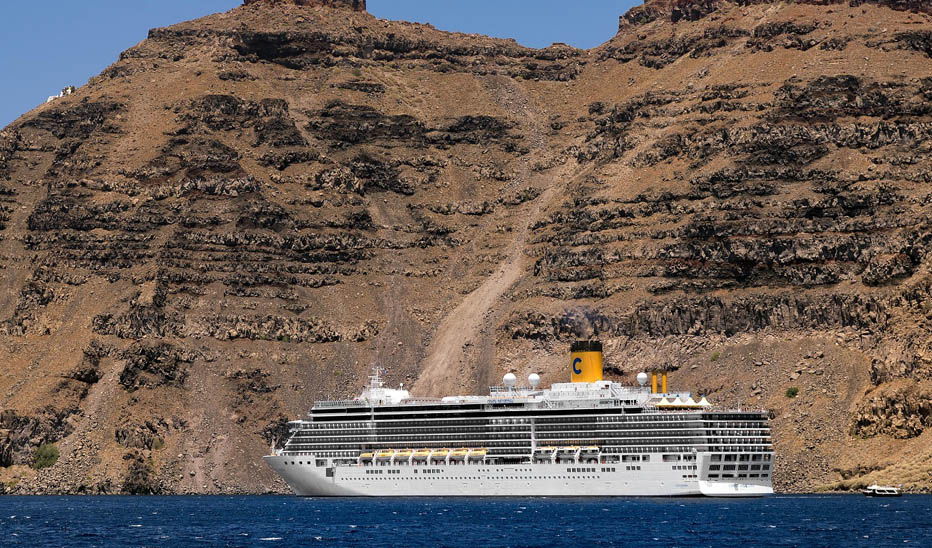A Greek Islands cruise offers a remarkable way to explore some of the most beautiful and historic islands in the Mediterranean. From the white-washed buildings of Santorini to the ancient ruins of Rhodes, each island has its own unique charm and appeal. Cruises to the Greek Islands typically include stops at iconic destinations such as Mykonos, known for its lively nightlife and stunning beaches; Crete, with its rich history and the famous Palace of Knossos; and the serene beauty of Naxos and Paros, perfect for those seeking a more relaxed atmosphere. Passengers can visit ancient archaeological sites, wander through narrow cobblestone streets, and enjoy the crystal-clear waters of the Aegean Sea. Whether you’re a history enthusiast, a beach lover, or someone who enjoys exploring traditional Greek villages, a Greek Islands cruise offers a perfect blend of adventure, culture, and relaxation.
Onboard, a Greek Islands cruise promises a luxurious and comfortable experience, with many ships offering a variety of amenities to ensure a memorable holiday. From gourmet dining featuring Mediterranean cuisine, including fresh seafood and traditional Greek dishes, to state-of-the-art wellness facilities, there’s no shortage of ways to relax and indulge. The ship’s entertainment options often include live music, themed parties, and cultural performances that celebrate Greek traditions, creating an immersive experience throughout the journey. The relaxed pace of a Greek Islands cruise allows passengers to spend quality time at each destination, whether it’s enjoying a leisurely day on one of the island’s many beaches, exploring historical landmarks, or savouring a traditional Greek meal at a seaside taverna. With its combination of breathtaking views, rich history, and luxurious onboard amenities, a Greek Islands cruise offers a perfect escape to one of the world’s most enchanting regions.

Book Your Cruise Early
Greek Islands cruises are very popular, especially during the summer months. Booking early ensures the best selection of cabins and often allows you to secure early-bird discounts and perks. The peak season runs from June to September, so if you plan to travel during these months, be sure to reserve your cruise well in advance to guarantee availability.
Choose the Right Itinerary
There are numerous islands to explore in Greece, so it’s important to choose the right itinerary. Some cruises focus on the Cyclades islands like Santorini and Mykonos, known for their stunning views and vibrant nightlife, while others explore the Ionian islands, which offer more relaxed settings and historical sites. Consider what you want to see and do—whether it's the beaches, ancient ruins, or picturesque towns—and select an itinerary that includes those destinations.
Pack for the Climate
The Greek Islands are known for their warm Mediterranean climate, so pack lightweight, breathable clothing and plenty of sunscreen. However, some of the islands, particularly those in the Aegean Sea, can be cooler in the evenings, so be sure to bring a light jacket or sweater. Comfortable shoes are a must, especially if you plan to explore the cobbled streets of places like Santorini or Rhodes.
Plan Your Shore Excursions Wisely
Greek Islands are packed with things to see and do. Popular excursions include visiting ancient ruins such as the Temple of Apollo in Delphi, the Acropolis in Athens, or the famous blue-domed churches in Santorini. However, some excursions can be expensive or crowded, so it’s worth researching your options. Consider exploring independently or booking smaller, more personalised tours for a unique experience.
Understand Onboard Costs
Many Greek Islands cruises include meals and entertainment, but extra costs such as drinks, shore excursions, spa treatments, and specialty dining can quickly add up. Make sure to check if gratuities are included in the price or if they are added separately. If you plan on enjoying drinks during your cruise, it may be worth looking into purchasing a drinks package to help manage costs.
Be Aware of Dress Codes
Cruise ships to the Greek Islands often have casual daytime attire, but many have formal or smart casual nights for dining. It’s important to pack both casual and formal wear to meet the dress codes for evening events. While exploring the islands, modest clothing is required when visiting religious sites, like monasteries or churches, so make sure to carry something to cover your shoulders or legs if necessary.
Prepare for Seasickness
While the waters around the Greek Islands are usually calm, seasickness can still affect some people. If you’re prone to seasickness, bring seasickness bands, medication, or ginger tablets. Booking a cabin in the middle of the ship on a lower deck is often the best choice if you're sensitive to motion, as it will reduce the likelihood of feeling the ship’s movement.
Have Local Currency on Hand
Greece uses the euro (€), and while credit cards are widely accepted, it’s useful to have cash for small purchases like souvenirs or snacks. Many of the smaller shops and markets on the islands may prefer cash, so it’s a good idea to carry some local currency with you. ATMs are commonly found in major tourist spots, but it’s always helpful to have a small amount of cash for convenience.
Stay Connected Smartly
Wi-Fi on cruise ships can be expensive, and roaming charges in Greece can also add up. Consider purchasing a local SIM card or using a portable Wi-Fi hotspot to stay connected at a lower cost. In most ports, especially on popular islands like Mykonos and Crete, you’ll find free public Wi-Fi in cafes or restaurants, so you can check emails or share photos when you’re ashore.
Be Mindful of Local Customs
Greece is a country rich in history and culture, and respecting local customs is essential. When visiting churches or monasteries, dress modestly by covering your shoulders and knees. Greeks are generally very friendly, but it’s important to be polite and respectful, especially in more traditional areas. Tipping is customary in restaurants and for tour guides, typically around 5-10%, but not compulsory. Also, be aware that the pace of life on the islands can be slower than in larger cities, so patience is appreciated.